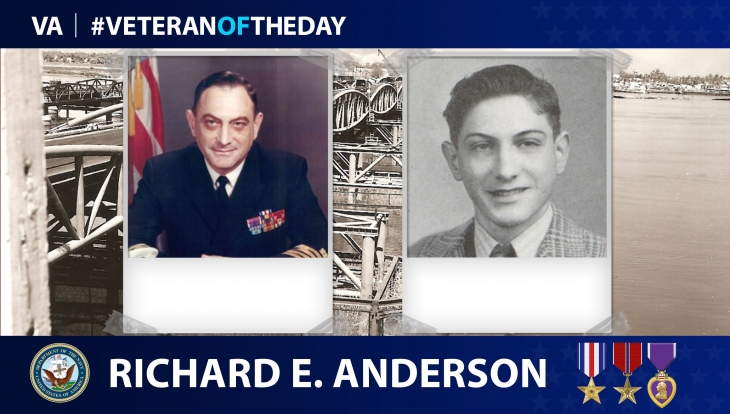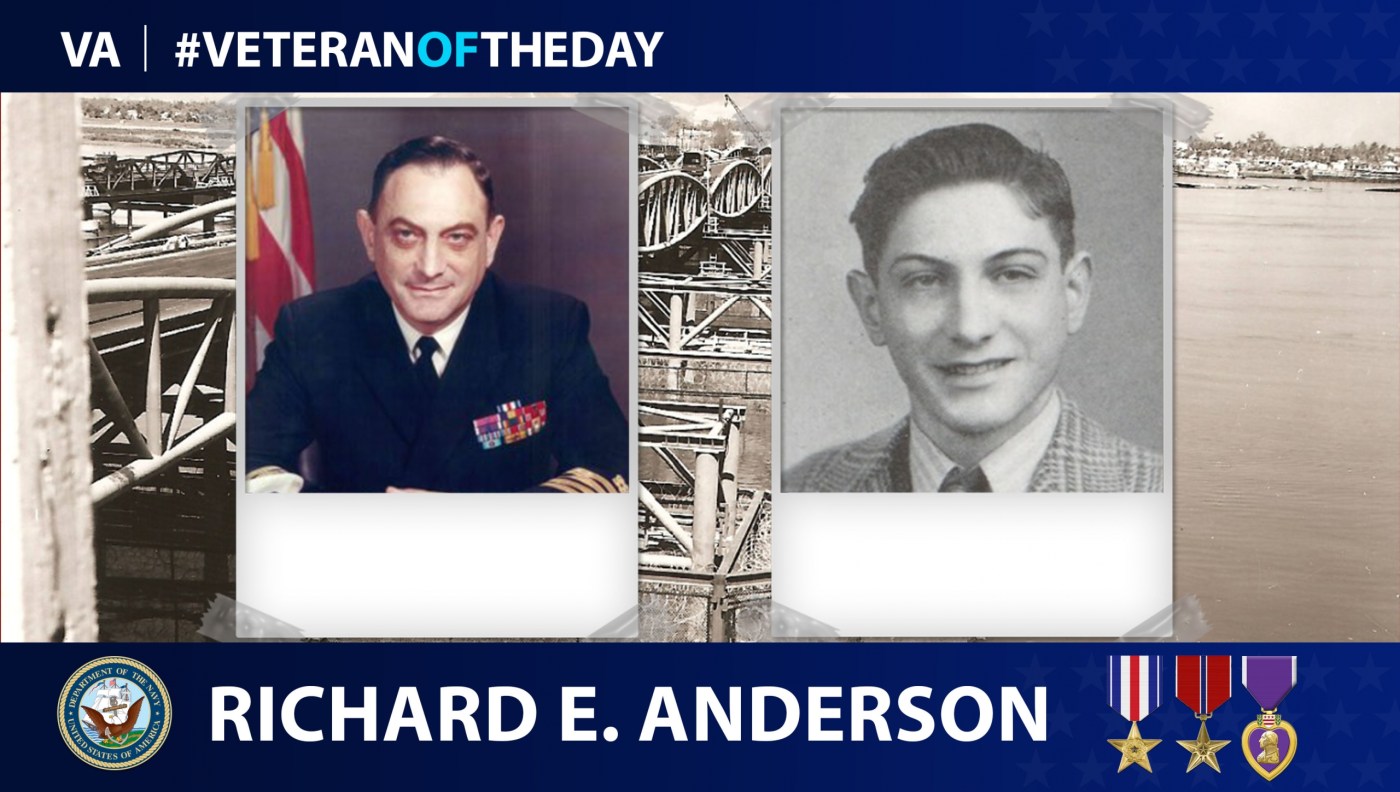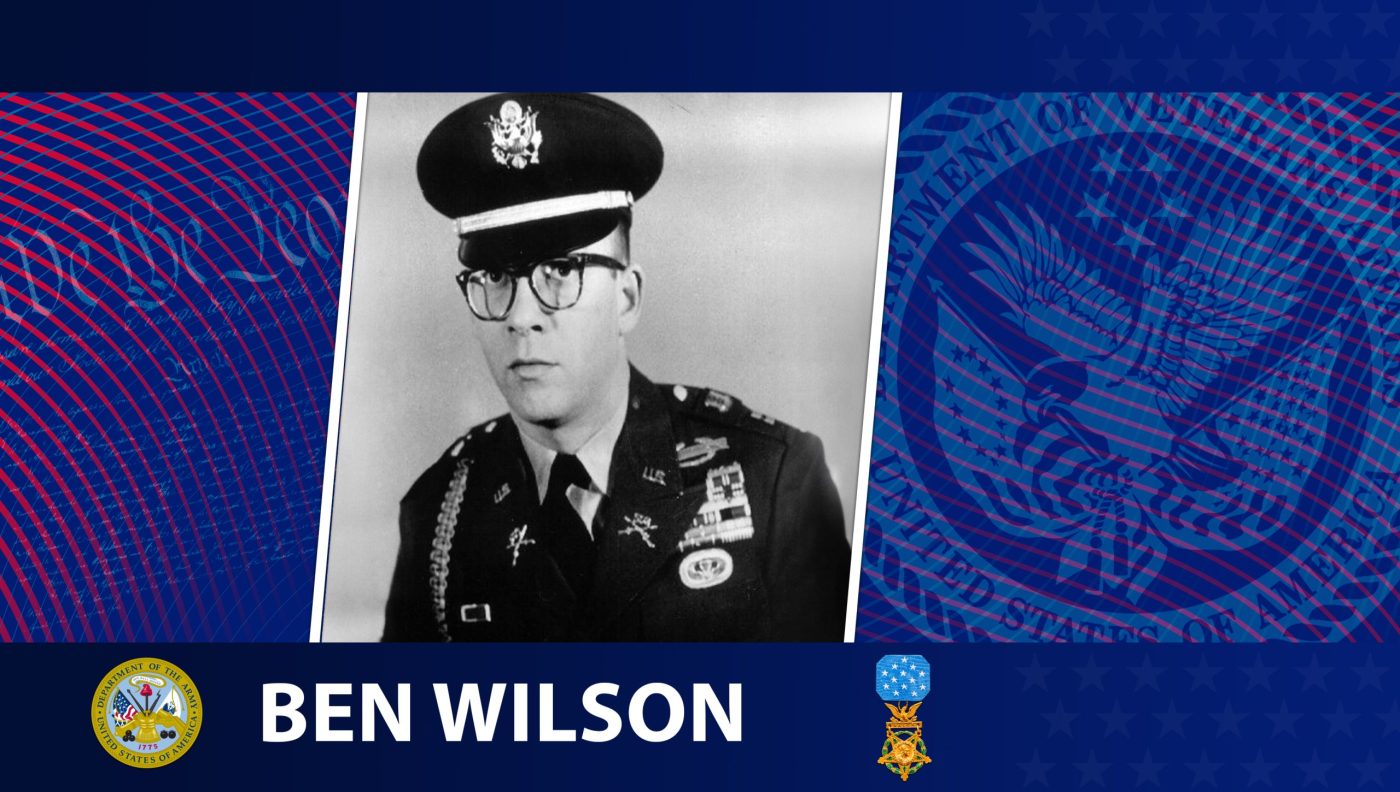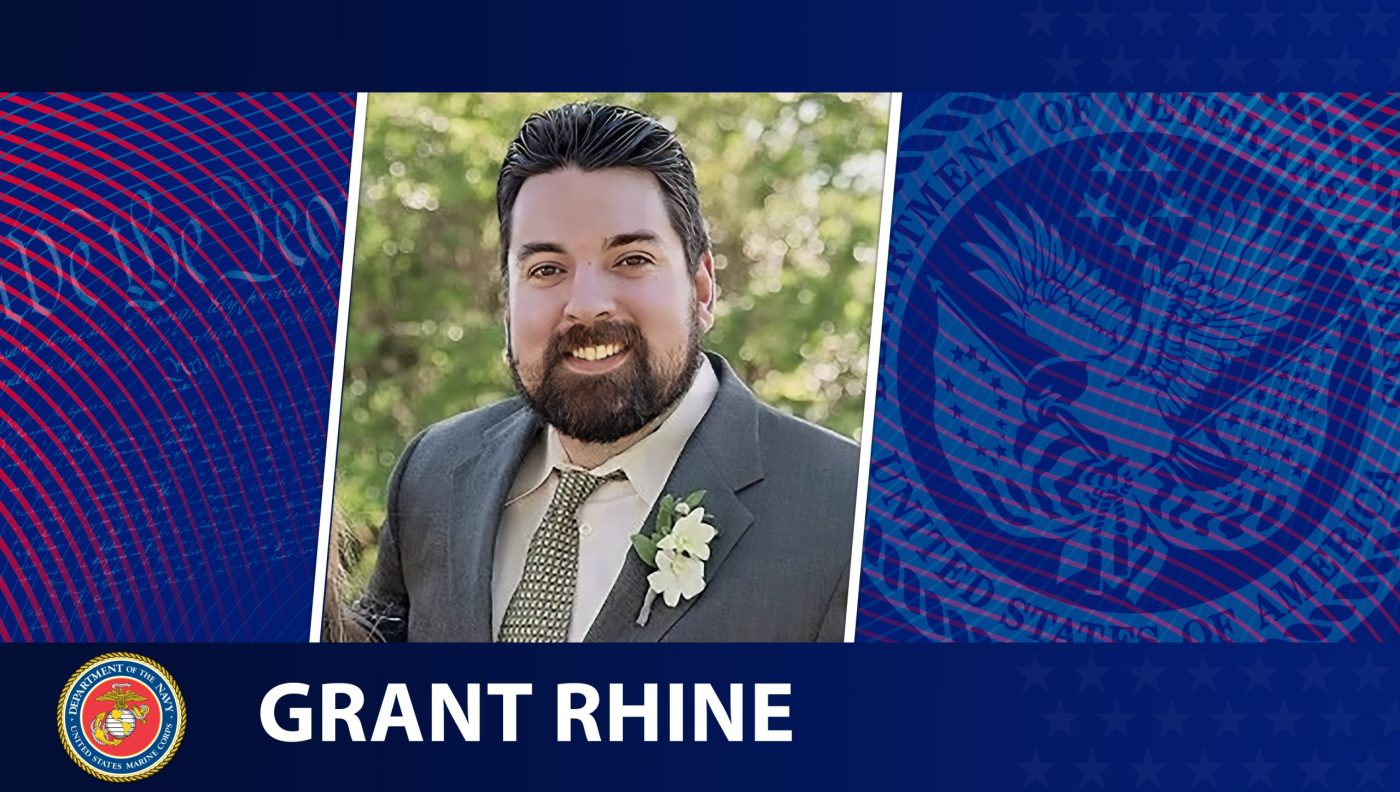
Today’s #VeteranOfTheDay is Army Air Forces and Navy Veteran Richard Ernest Anderson, who served during World War II, Korea and Vietnam.
Richard E. Anderson was born in North Little Rock, Arkansas, in March 1926. After graduating from high school, Anderson joined the Army Air Forces and served during the closing years of World War II.
After the war, Anderson earned a bachelor’s degree in civil engineering from the University of Arkansas in 1949. With his degree, Anderson commissioned as an ensign in the Civil Engineer Corps of the U.S. Naval Reserve. He reported in 1951 as an assistant public works officer at the Construction Battalion Center in Port Hueneme, California.
In 1952, Anderson met his future wife, Mary Ann, while on duty in the Comptroller Division of the Bureau of Naval Personnel in Washington, D.C. The couple married in 1953. After serving during the Korean War, Anderson became the executive officer of Detachment Bravo in Antarctica from 1957 to 1958. While serving in Antarctica, he was in a helicopter crash and sustained severe burns. He survived the crash but was forced to stay in Antarctica for the winter until he could be flown to the then-Bethesda Naval Hospital in Bethesda, Maryland. After recovering, he obtained a master’s degree in environmental engineering from the University of Michigan.
While stationed in Bremerton, Washington, Anderson witnessed a car accident in which a car burst into flames after an accident. Anderson, alongside a companion, went to assist the trapped driver of the car. Breaking the window of the vehicle, Anderson aided in the driver’s rescue, nearly being overwhelmed by the fire himself. For his actions that day, he received a Navy and Marines Corps Medal.
Anderson’s expertise as a civil engineer and a seasoned leader was invaluable during the Vietnam War. From June 1965 to February 1966, he led Naval Mobile Construction Battalion NINE as a commander. Despite deploying into dangerous conditions, Anderson’s battalion built several vital structures, including a 400-bed station hospital. They also replaced a 310-foot section of the Da Nang River Bridge. For their effectiveness and for withstanding two attacks by the Viet Cong, Anderson received a Legion of Merit medal.
Anderson returned to the U.S. in 1966. He was the director of Navy Facilities System Group at the Naval Facilities Engineering Command in Washington, D.C. In 1970, he returned to Vietnam for duty in the Naval Facilities Engineering Command Contracts in Saigon. He retired as a captain in 1974.
During his service, Anderson received a Silver Star, a Bronze Star Medal, a Purple Heart, a Legion of Merit, a Navy and Marine Corps Medal, an Army Good Conduct Medal, an American Campaign Medal, a World War II Victory Medal, a National Defense Service Medal with a bronze star, a Korean Service Medal, an Antarctica Service Medal with Wintered Over clasp, a Vietnam Service Medal and a Republic of Vietnam Campaign Medal with a device bar.
Anderson passed away at 91 years old on Oct. 22, 2017.
We honor his service.
Nominate a Veteran for #VeteranOfTheDay
Do you want to light up the face of a special Veteran? Have you been wondering how to tell your Veteran they are special to you? VA’s #VeteranOfTheDay social media feature is an opportunity to highlight your Veteran and his/her service.
It’s easy to nominate a Veteran. Visit our blog post about nominating to learn how to create the best submission.
Contributors
Writer: Milosh Mihajlovic-Klaric
Editors: Nathaniel Scott and Annabelle Colton
Fact checker: Carl Wesseln
Graphic artist: Brittany Gorski
Topics in this story
More Stories
This week’s Honoring Veterans Spotlight honors the service of former MLB player and Army Veteran Richard “Dick” Groat, who served from 1953 to 1954 during the Korean War.
This week’s Honoring Veterans Spotlight honors the service of Army Veteran Benjamin F. Wilson, who served during World War II and the Korean War.
This week’s Honoring Veterans Spotlight honors the service of Marine Corps Veteran Grant Rhine, who is now active in the Veteran community Irreverent Warriors.






